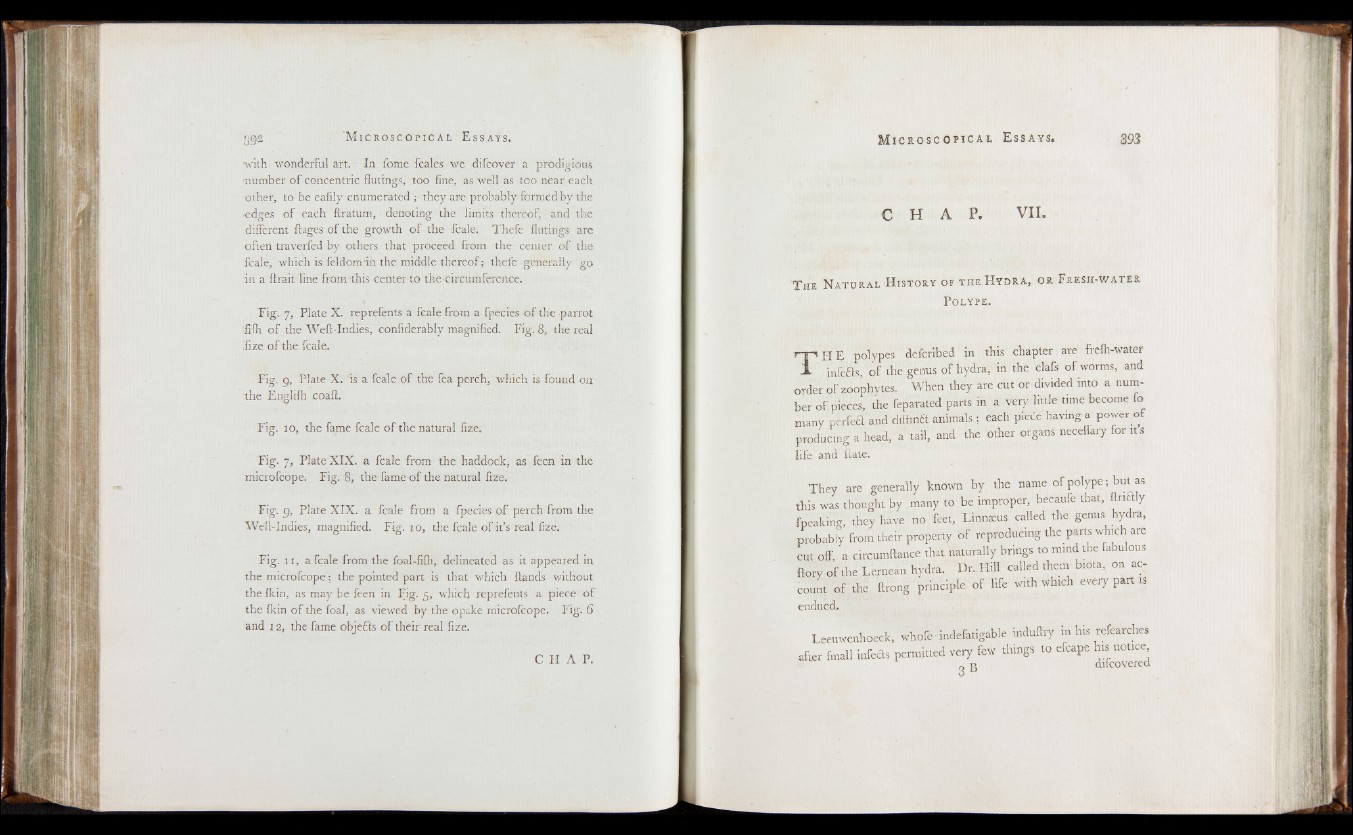
-with wonderful art. In fome fcales we difcover a prodigious
number o f concentric flutings, too fine, as well as too near each
other, to be eafily enumerated ; they are probably formed by the
•edges o f each ftratum, denoting the limits thereof, and the
different ftages of the growth o f the fcale. Thefe flutings are
often traverfed by others that proceed from the center of the
fcale, which is feldom in the middle thereof; thefe generally go
in a flrait line from this center to the circumference.
Fig. 7, Plate X. reprefents a fcale from a fpecies of the parrot
fifh of the Weft-Indies, confiderably magnified. Fig. 8, the real
fize o f the fcale.
Fig. 9, Plate X. is a fcale of the fea perch, which is found on
the Englifh coaft.
Fig. 10, the fame fcale O 3 o f the natural fize.
Fig. 7, Plate X IX. a fcale from the haddock, as feem in the
microfcope. Fig. 8, the fame of the natural fize.
Fig. 9, Plate XIX. a fcale from a fpecies o f perch from the
Weft-Indies, magnified. Fig. 10, the fcale of it’s real fize. '
Fig. 11, a fcale from the foal-filh, delineated as it appeared in
the microfcope; the pointed part is that which Hands without
the fkin, as may be feen in Fig. 5, which reprefents a piece o f
the fkin o f the foal, as viewed by the opake microfcope. Fig. 6
T he Natural History of the Hydra, or Fresh-water
Polype.
T PIE polypes defcribed in this chapter are frelh-water
inrefts, o f the genus of hydra, in the clafs o f worms, and
order o f zoophytes. When they are cut or divided into a number
of pieces, the feparated parts in a very little time become fo
many perfeft and diftinH animals ; each piece having a power o f
producing a head, a tail, and the other organs neceflary for its
life and Hate.
They are generally known by the name o f polype-, but as
this was thought by many to be improper, becaufe that, ftriflly
fpeaking, they have no feet, Linnaeus called the genus hydra,
probably from their property of reproducing the parts which are
cut off a circumftance that naturally brings to mmd the fabulous
{lory o f the Lernean hydra. Dr. Hill called them biota, on account
o f the ftrong principle o f life with which every part is
endued.
Leeuwenhoeck, whofe indefatigable induftry m his refearches
after fmall infefts permitted very few things to efcape his notice
2 3 difcovered